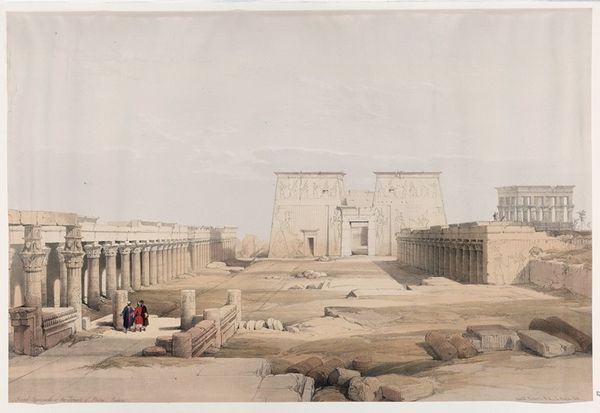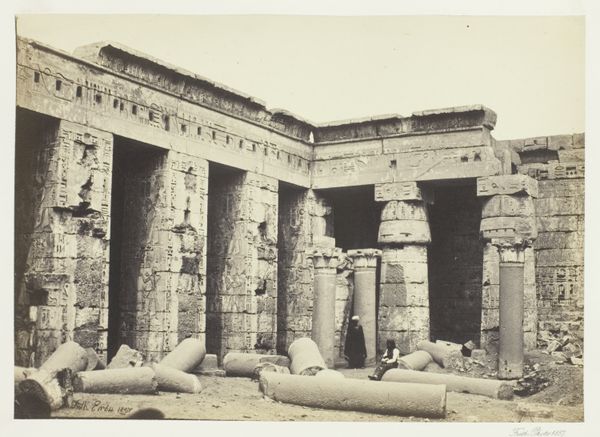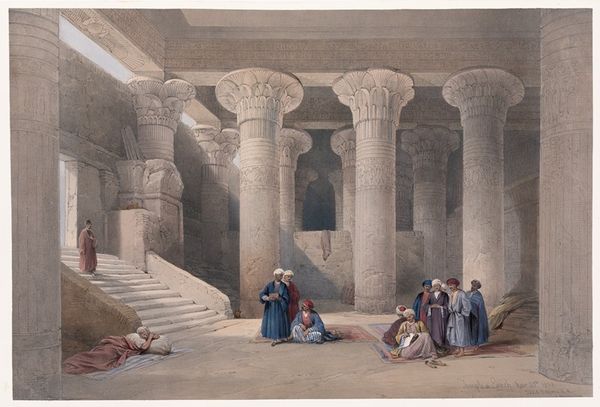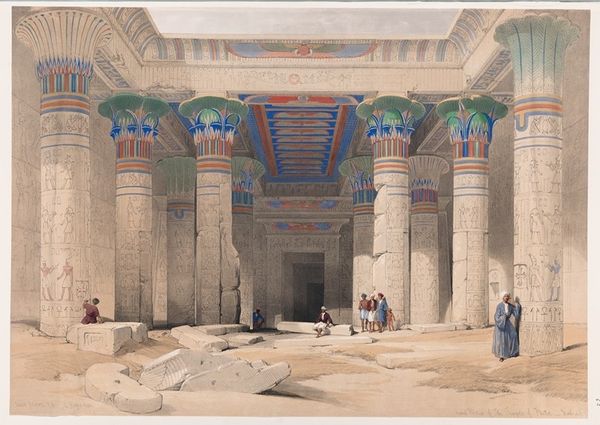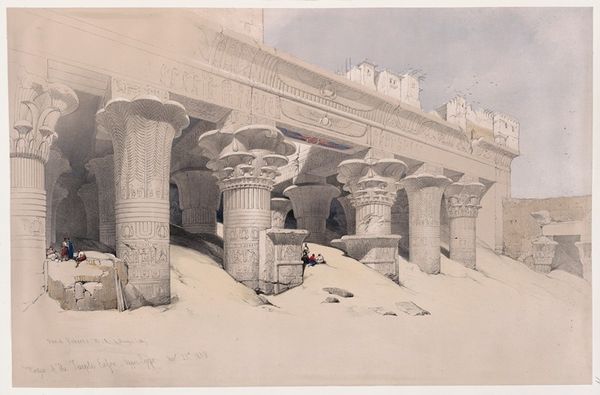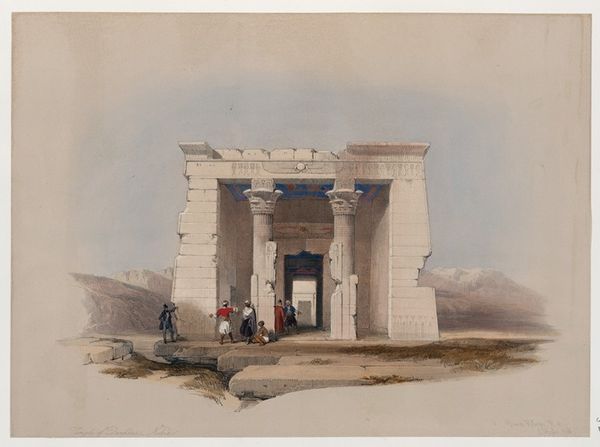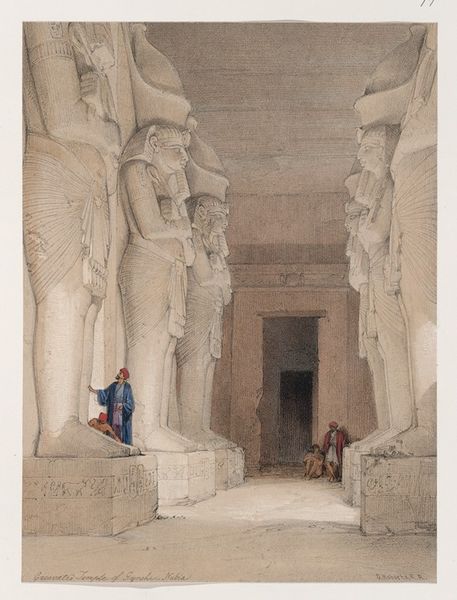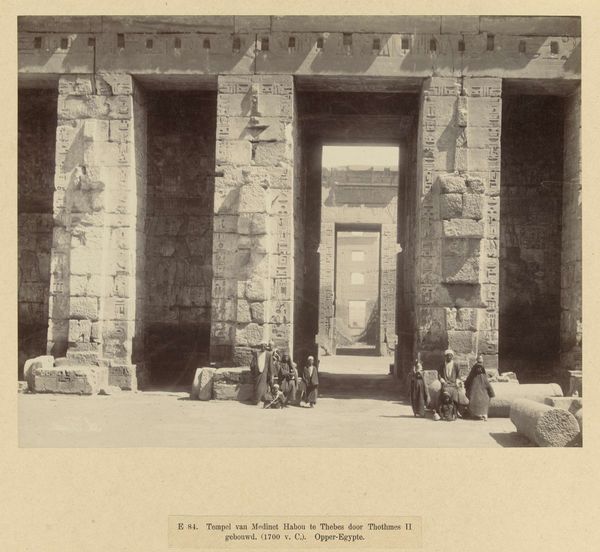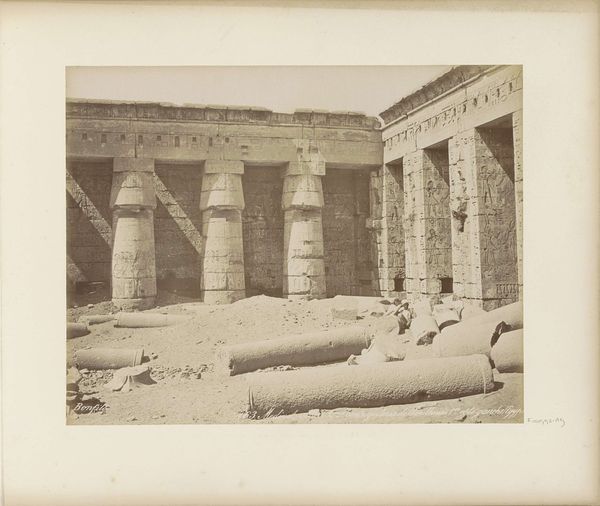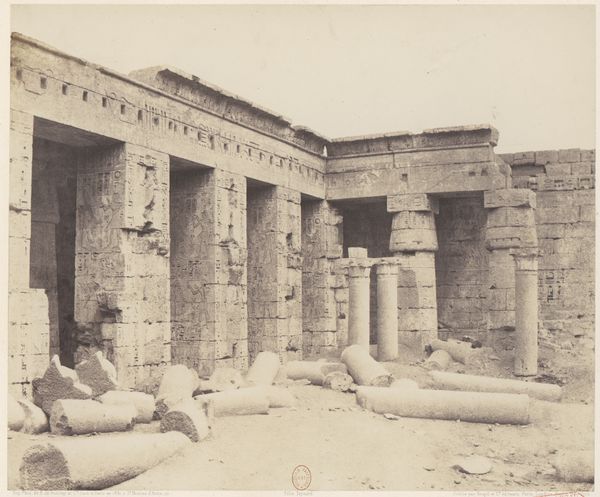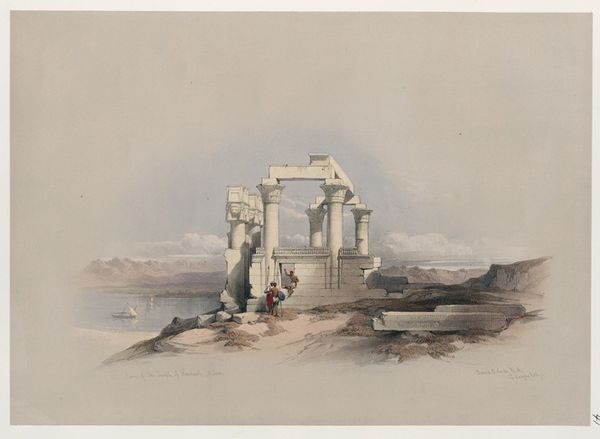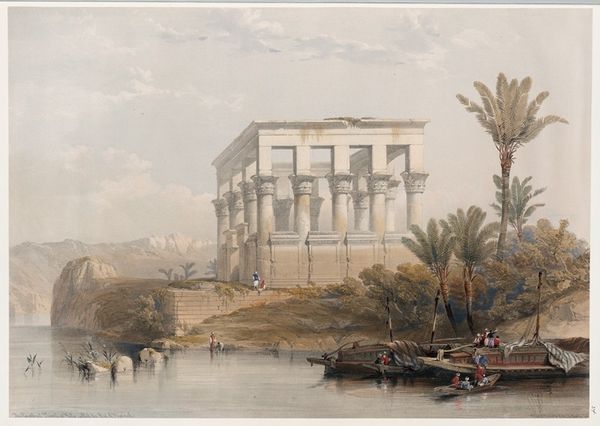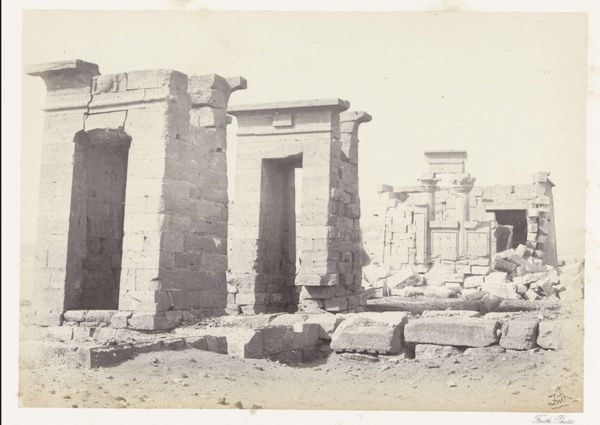![Medinet Abou [Medinet Habu], Thebes. Dec. 5th, 1832. by David Roberts](/_next/image?url=https%3A%2F%2Fd2w8kbdekdi1gv.cloudfront.net%2FeyJidWNrZXQiOiAiYXJ0ZXJhLWltYWdlcy1idWNrZXQiLCAia2V5IjogImFydHdvcmtzLzczNjcwZDZjLTk3ZDgtNGI0MC1iMmUxLTI5NmJkZjVhNjFkMS83MzY3MGQ2Yy05N2Q4LTRiNDAtYjJlMS0yOTZiZGY1YTYxZDFfZnVsbC5qcGciLCAiZWRpdHMiOiB7InJlc2l6ZSI6IHsid2lkdGgiOiAxOTIwLCAiaGVpZ2h0IjogMTkyMCwgImZpdCI6ICJpbnNpZGUifX19&w=1920&q=75)
painting, watercolor
#
painting
#
landscape
#
ancient-egyptian-art
#
watercolor
#
ancient-mediterranean
#
romanticism
#
cityscape
#
history-painting
#
watercolor
Copyright: Public Domain: Artvee
Editor: This watercolor painting by David Roberts, created between 1846 and 1849, depicts Medinet Abou in Thebes. I am immediately struck by how the artist captures the play of light and shadow within these ancient ruins. What formal elements stand out to you? Curator: I am particularly drawn to the geometric interplay between the vertical columns and the horizontal ruins strewn across the foreground. Roberts uses light not only to illuminate the scene but also to articulate the very structure of the composition. Observe how the columns establish a rhythm which leads the eye, but this rhythm is purposefully disrupted, destabilizing any simple reading. The cool tones of the architecture contrast with the warmer earth tones, further emphasizing the ruins' materiality. Editor: It's almost as though the ruins themselves are given a sort of protagonistic weight in this picture. They lead me around and ask me questions. It is, in that sense, slightly fragmented. Is that the product of Romanticism? Curator: Indeed. Consider how Roberts juxtaposes meticulous detail in rendering the hieroglyphs, for instance, with a broader, less defined treatment of the sky. The detailed inscription is a signifier here that plays against the flat open ground-sky backdrop; its sign points towards great complexity. Such a calculated contrast serves not simply to provide depth, but as an essential structural method of the artistic process here, bringing what we see in this watercolor out of an objective observation and into an individual engagement with what’s in view. Editor: So, beyond just its aesthetic appeal, you see this fragmentation as essential to understanding the artistic process here. The use of geometric shapes and materiality and their interaction—that helps us understand Roberts' intentions? Curator: Precisely. These formal relationships serve as a critical link to the painting’s significance beyond mere representation. The method itself has become meaningful. Editor: That is so cool; thank you for elucidating this! I will look more closely now to consider those formal relationships in this work, particularly those relationships between fragmented subjects. Curator: An absolute pleasure. Approaching the artwork in this manner illuminates so much.
Comments
No comments
Be the first to comment and join the conversation on the ultimate creative platform.
